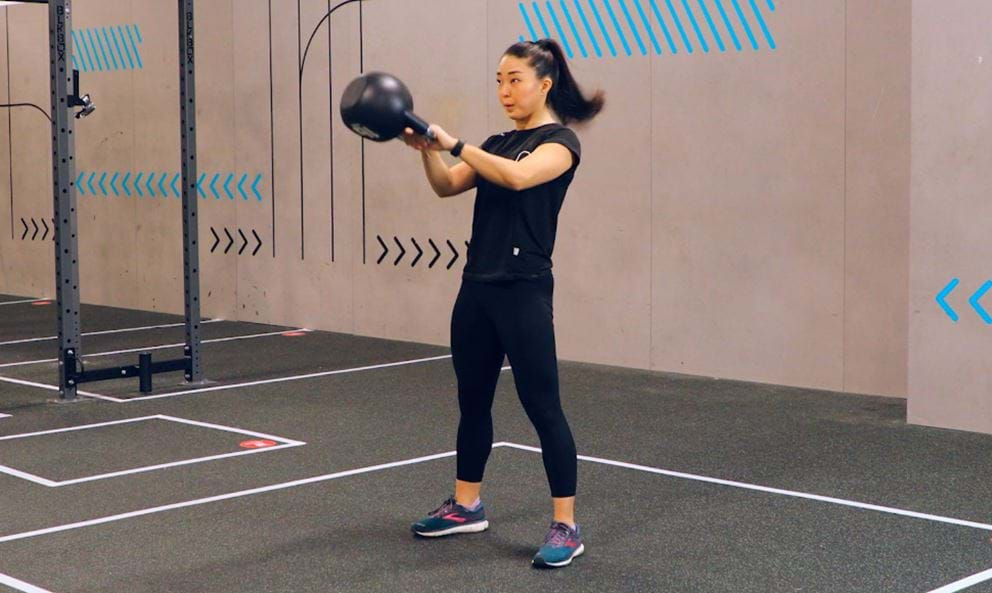What is Circuit Training and Can I Do it in the Gym?

Circuit training is one of the big buzzwords in the fitness world, and for good reason. This training style allows you to get a solid strength and conditioning workout done with minimal time.
Here's a 15 minute full body circuit you can try when you next visit the gym.
What is circuit training?
The hint is in the name. Circuit training involves doing a set number of exercises, back-to-back in quick succession, for rounds — or “circuits.” The rest time between circuits is generally very low, and the rest time between exercises is ideally non-existent.
This is a high-intensity form of training which can be done with machines, free weights, or body weight.
A basic circuit training routine could be something like 20 pushups, followed by 20 squats, then 20 burpees, rinse and repeat for 10 rounds.
What are the benefits of circuit training?
The first thing to keep in mind about circuit training is that, if done right, it’s a classic form of HIIT (High-Intensity Interval Training). HIIT, of course, is known to have a bunch of benefits. A 2010 review1 in the Journal of Obesity notes that, among other things, HIIT has been shown to be effective at promoting fat loss, is known to boost aerobic and anaerobic fitness significantly, significantly lowers insulin resistance (reducing the risk of Type 2 diabetes), and increases muscle mass.
While it’s often said that circuit training yields fewer strength benefits than conventional weight training, at least one 2011 study2 published in the Journal of Strength and Conditioning Research found no real difference in strength gain between the two training approaches, while noting that circuit training took less time and resulted in greater fat loss.
Other practical benefits of circuit training in the weights room include that it allows you to get your workout done in a hurry — typically no more than 20 minutes for a full body session. Circuit training also combines your strength and cardio sessions effectively, so you don’t need to spend an extra 30 minutes on a treadmill once you’re done lifting.
Circuit training is physically demanding - it can leave you feeling fully exhausted after your training sessions, so make sure to provide enough time to allow your body to recover before going into your next workout.
How to create your own circuit training routine
The idea of a circuit training session is essentially to get a full-body workout in a hurry, using a variety of different exercises and bits of equipment.
While any exercises can hypothetically be used to create a circuit training routine, you’ll generally want to avoid heavy weights on risky lifts, such as deadlifts, as your form is bound to become compromised due to the intensity and speed of the training. You’ll also want to focus on compound exercises, as curls and calf raises don’t do much to up the intensity and keep your workout short.
You’ll also want to alternate between exercises that target different muscle groups, in order to ensure that you’re able to keep training after the first couple of exercises.
Your circuit training routine can include any combination of exercises you like, for as many rounds as you think you can manage. The key is in moving directly from one exercise to the next, and keeping your rest breaks between circuits as short as possible — ideally around 30 seconds.
Here are some exercises which can be easily integrated into a circuit training workout. Include at least four, and alternate between target muscle groups if you wanted to give another circuit a go:
- Cable chest press
- Cable rows
- Seated chest press machine
- Dumbbell chest press
- Dumbbell bent over rows
- Leg press
- Dumbbell overhead press
- Chin-ups
- Push-ups
- Dumbbell lunges
- Smith machine squats
- Lat pulldown machine
- Dumbbell flyes
- Bodyweight jump squats
Not sure which exercises to combine? Then try our free high intensity workout videos designed to help you get a workout in a short amount of time. All you need to do is hit play and get moving!
1 https://www.ncbi.nlm.nih.gov/pmc/articles/PMC2991639/
2 https://www.ncbi.nlm.nih.gov/pubmed/21659889


